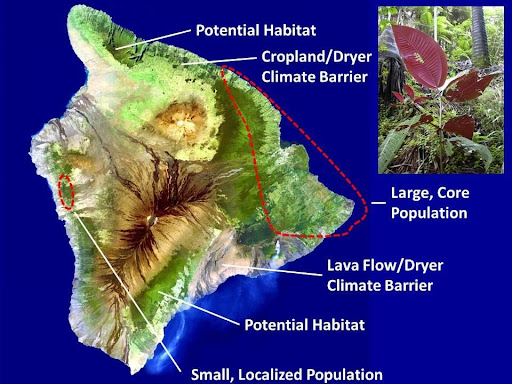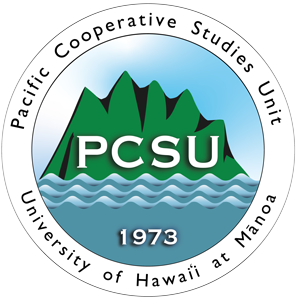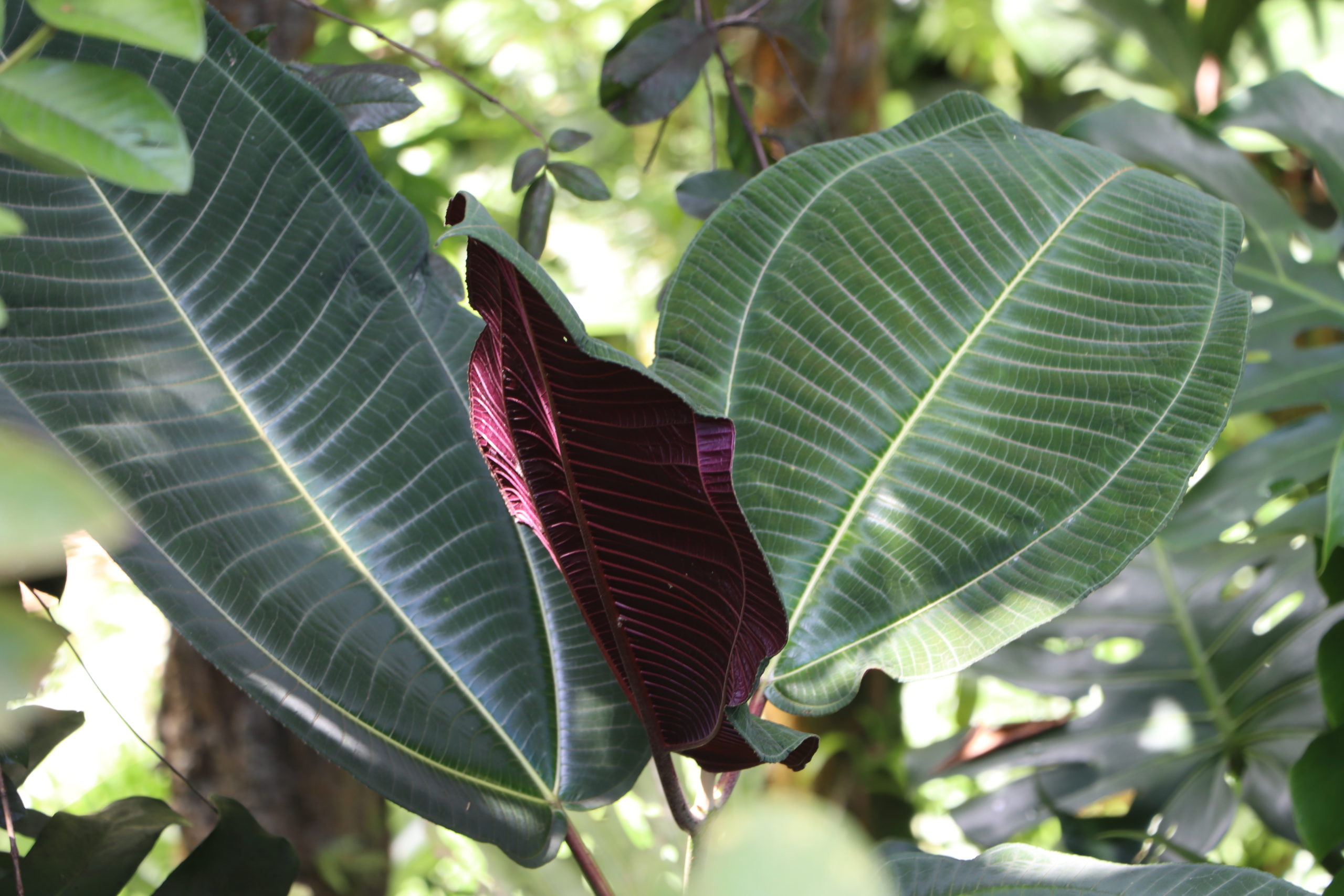
Miconia
Exclusion species: BIISC works to control this plant in limited areas
A mere 25 years after importation, botanical gardens, nursery owners, and private collectors on Hawaii Island noticed an alarming amount of miconia keiki popping up near adult trees. As a result, in 1982, a Hilo nursery that actively sold miconia voluntarily destroyed mature plants and stopped their sale. That same year, Joyce Davis, a botanist with the Hawaii Department of Land and Natural Resources (DLNR) Division of Forestry and Wildlife (DOFAW) on Hawaii Island, launched an outreach campaign. Beginning with a miconia information display at the Hawaii County Fair, Davis set about asking the public for help identifying and reporting miconia. The Cougars 4-H Club, led by Kay Nishioka of DLNR, joined in the control efforts, and the issue even made it into the Hawaii Tribune-Herald. Many residents responded, and thousands of miconia trees were destroyed as a result.
However, each mature plant had already contributed millions of seeds to the environment. Once the non-native birds began eating and dispersing the seeds into the forest around the Big Island, new populations began springing up both close to human habitat – as well as miles away. For every plant destroyed by volunteers, 100 more were growing a bird’s flight away. Overwhelmed, the 4H club abandoned their control efforts in 1984, and miconia control occurred only sporadically by private landowners over the next few years.
Early surveys to locate the plant confirmed miconia was present on more than 100,000 private and state properties! Obtaining permission to enter private residences, mapping the population, and conducting public outreach were monumental tasks, and that was before even the hard work of hiking to and killing the trees, a demanding job in itself that was executed on a shoestring budget. The scale of the problem quickly overwhelmed the hodgepodge of local organizations and volunteer groups who had set out to tackle the problem.
In the 90s, new assessments of the continued spread of miconia led to increased recognition by policymakers. Seeing is believing. It was impossible to miss the ecological takeover that was occurring. Finally, in 1992 miconia was listed on the Hawaii State Noxious Weed List. This made it illegal to import and introduce the plant to any new areas, and it could not be legally sold in nurseries. In 1996, Governor Cayetano’s administration further introduced Operation Miconia, a coordinated statewide effort to control miconia. However, the cat was out of the bag. By that time, miconia had spread into much of the windward rainforests. With seeds that persist in soil for 20 years, eradication was impossible.
Impacts:
- Miconia is capable of forming monotypic stands, dominating and shading other plant species.
- Forms an ‛umbrella’ over the watershed, potentially reducing the amount of rainwater that seeps into the watershed
- Shallow root systems promotes erosion
- One plant generates 3 to 9 millions bird-dispersed seeds a year
- Seeds lay dormant yet viable for many years
Description:
- A tree that can grow 50 feet tall
- Large oval-shaped leaves, green on top, purple underneath, with three main midribs running from stem to leaf-tip
- Flowers are small in size, white to light pink in color, grow on a stalk in clusters
- Small dark purple fruits grow in clusters. Each one containing 100s of sand-sized seeds
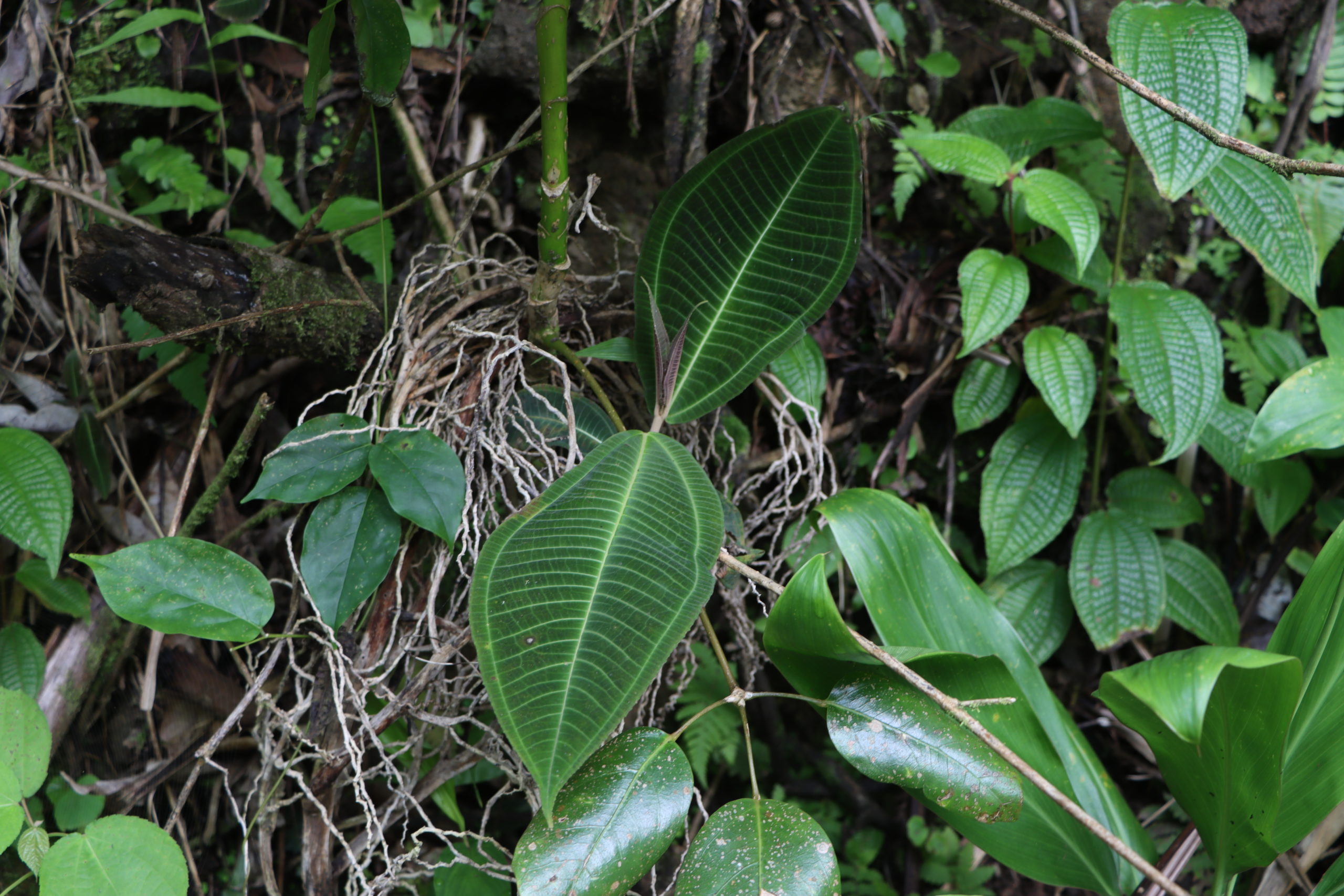
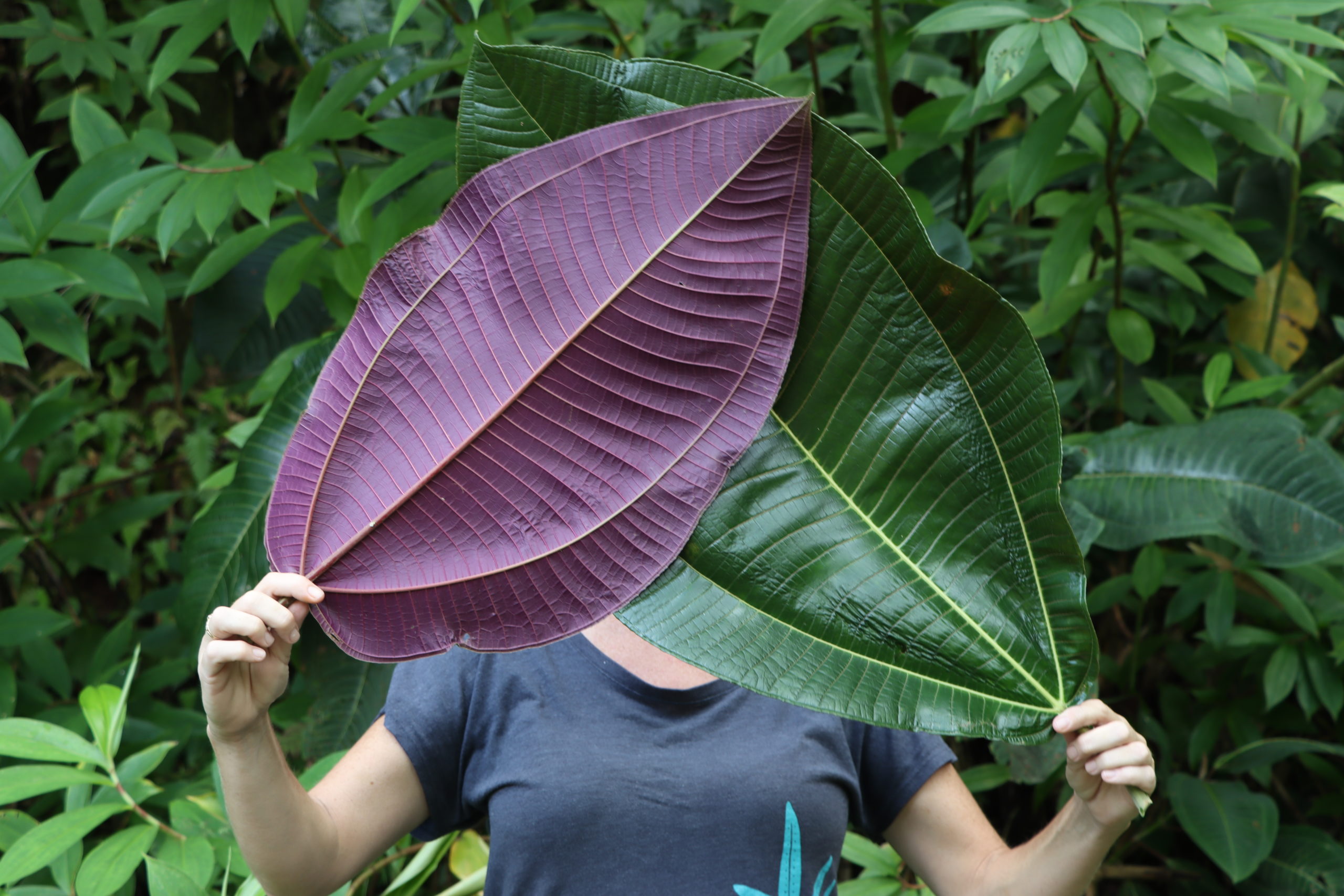
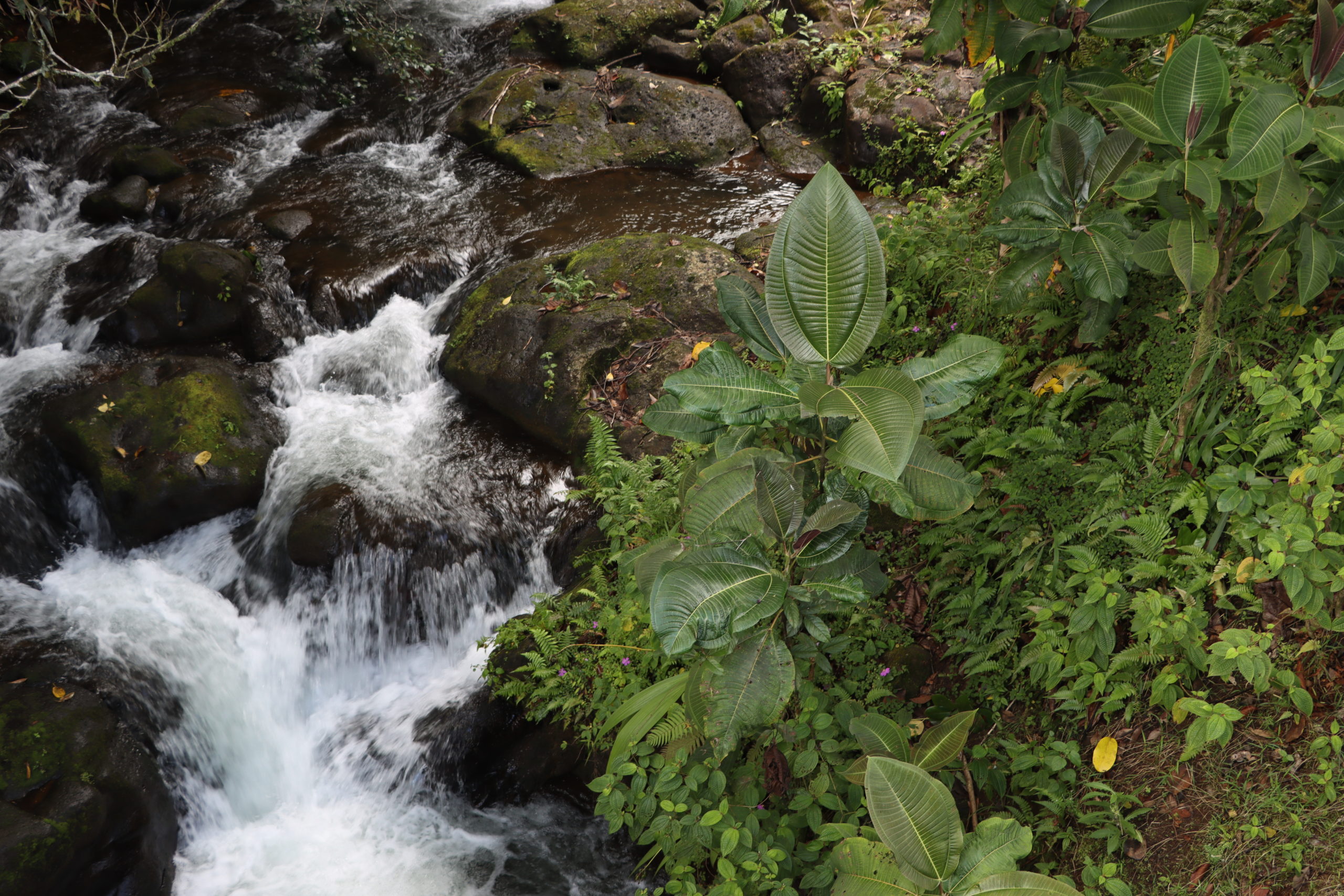
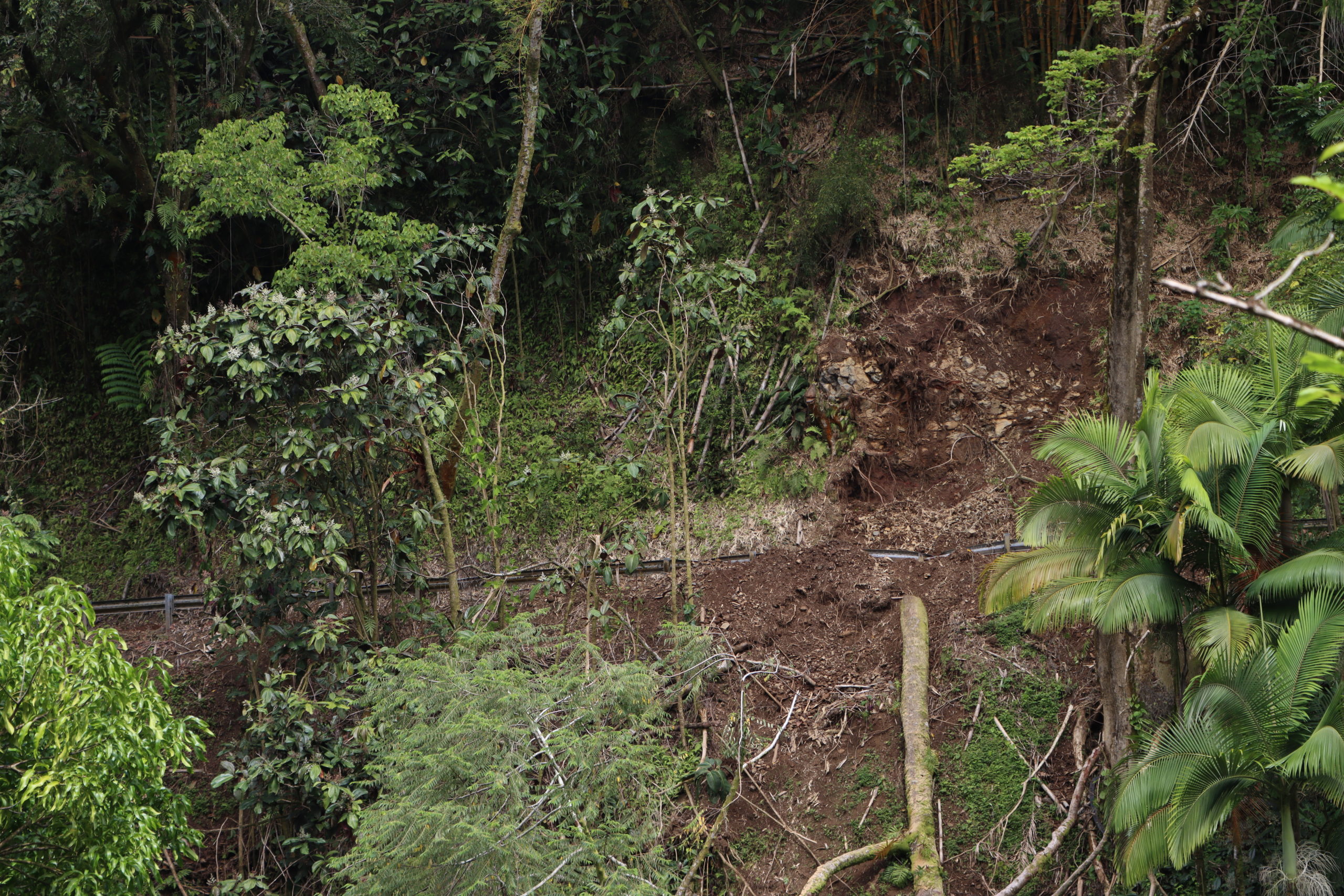
What we do at BIISC
The Big Island Invasive Species Committee (BIISC) has worked with partner agencies to control miconia in areas such as Wao Kele O Puna and the Keaukaha Military Reserve-Lowland Wet Forest. BIISC is actively monitoring and controlling miconia along the Hamakua boundary to prevent incursion into Kohala, which does not yet have detections of miconia. Hawaii island has several large natural climate barriers that prevent the introduction from heavily infested sites. It’s unlikely a bird or animal would carry the seeds across the barrier, but it is possible that human movement of seeds (such as in mud stuck to tires) could be a vector.
Controlling Miconia
Here is information on controlling miconia for homeowners.
